Chapter 7.7: Public Art
Public art refers to artworks that are created specifically for public spaces. They may include murals, sculptures, earthworks, graffiti and many other mediums but they share the characteristics of being designed for and accessible to the general public. The examples below will demonstrate how the meanings and functions of these works vary widely, based on the societal and aesthetic values of the communities, institutions, and individuals which commission them. You will also see how some have created much controversy.
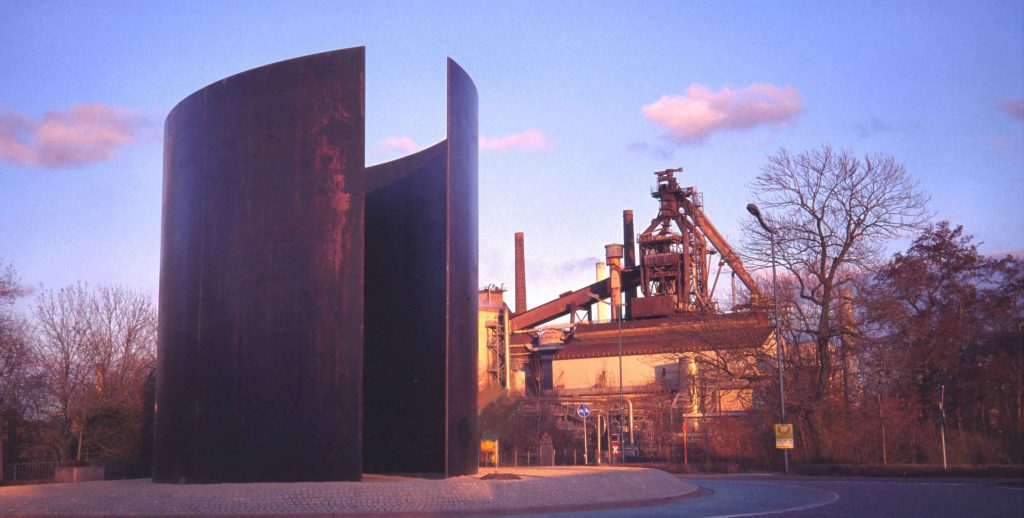
The Tilted Arc
The Tilted Arc, 12 ft x 120 ft, 1981, created by Richard Serra for the Federal Plaza in New York City, is one example.
The artist described his intent as follows, “The viewer becomes aware of himself and of his movement through the plaza. As he moves, the sculpture changes. Contraction and expansion of the sculpture result from the viewer’s movement. Step by step the perception not only of the sculpture but of the entire environment changes.” However, for the workers who had to navigate around the massive sculpture, it was a nuisance. Ultimately, public outcry won the day, and the sculpture was dismantled and destroyed.
Running Fence
In 1972 – 1976, artists Christo and Jeanne-Claude, created an ambitious temporary public work called The Running Fence that spanned 24.5 miles across two counties in California. The created work was a visually compelling physical structure, but it was also about the 4-year process that engaged a disparate group of farmers, artists, and public figures to collaborate, form relationships, and create stunning artwork together.
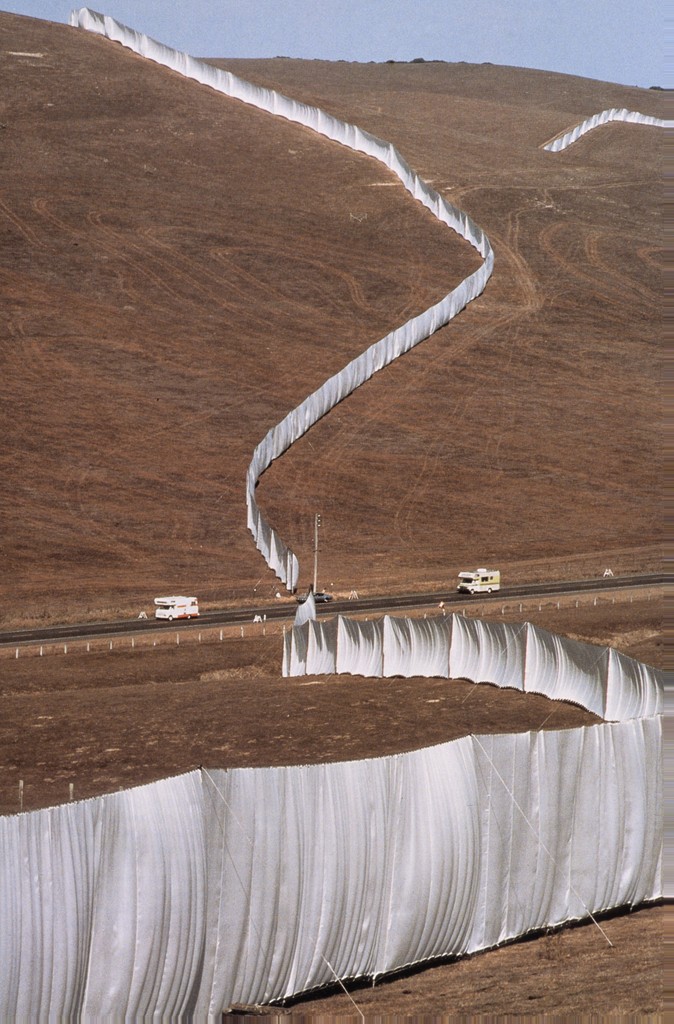
Vietnam Memorial
Maya Lin’s powerful memorial was also a controversial. Lin was the finalist selected from 1400 projects that competed for the Vietnam Memorial commission. The projects were up for vote anonymously -nobody knew anything about the author. After it was known that the artist was a young female architecture student from Yale, and that she was Asian American, the backlash was immediate. Yet, time has proven the worthiness and impact of this memorial to the fallen soldiers of the Vietnam Wall.
You can read about the controversy surrounding this work in this PBS Article from their Series Culture Shock: Maya Lin’s Vietnam Veteran’s Memorial.
Image and Video
If you have not had a chance to visit the Vietnam Memorial in person, take the following mini-video tour.
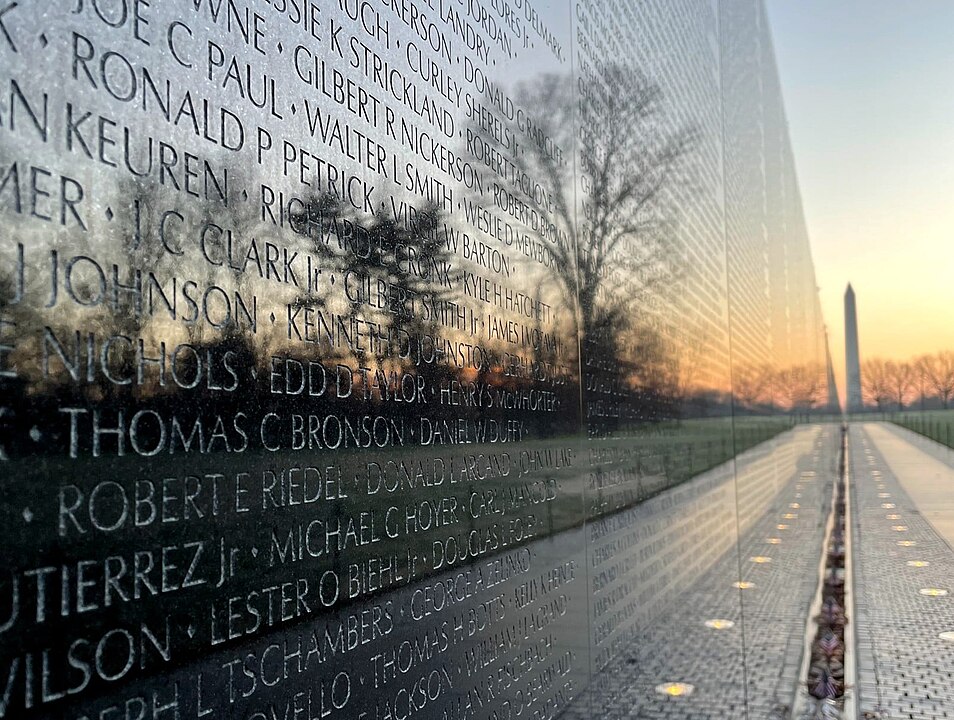
Maya Lin, Vietnam Veterans Memorial, with speakers: Dr. Beth Harris and Dr. Steven Zucker (7:13)
Roden Crater and Video
James Turrell, an artist who uses material light as the main element in his public works, created a masterpiece in Roden Crater, Arizona. In collaboration with Arizona State University, Turrel worked with a natural volcano and light as his media. Check out his art in Letting in the Light (ASU). Learn more about the artist in this biographic short video by the Los Angeles County Museum of Art.
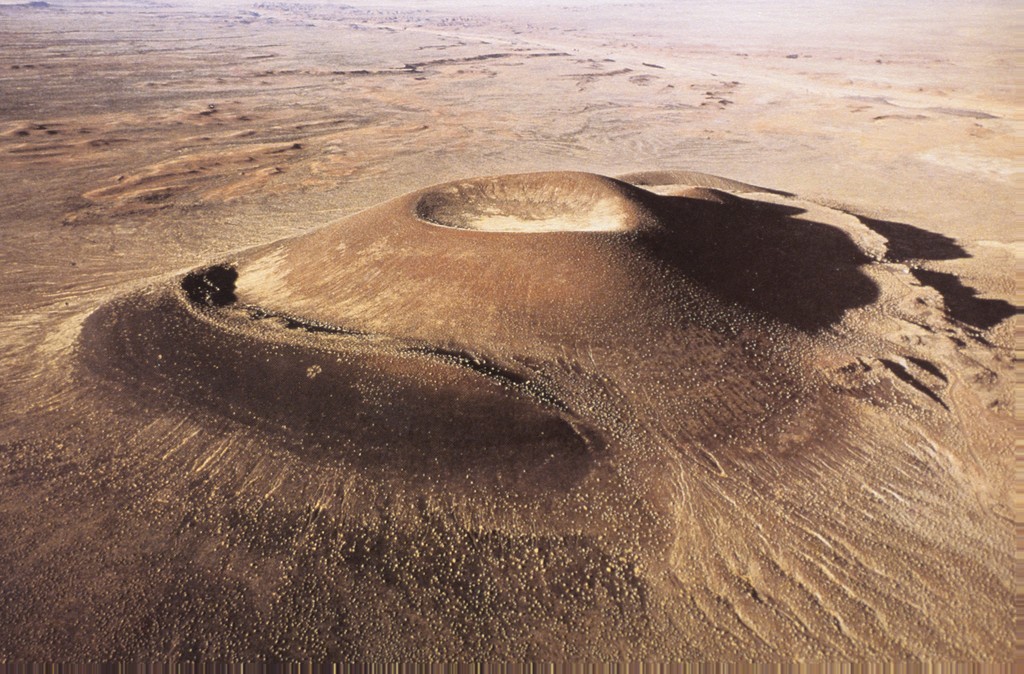
Letting the Light In: James Turrell, ASU partner on artwork (6:12)
Banksy
Recently in the news, we have seen the street artist Banksy. Who is he? This Smithsonian Magazine’s article The Story Behind Banksy: On his way to becoming an international icon, the subversive and secretive street artist turned the art world upside-down.
Recently, Banksy was in the news when one of his paintings made it to a Sotheby’s Auction, and after it was sold, it automatically shredded itself. In the artist’s Instagram, you will find photos and a short video of the moment Banksy Instagram , as well as some images of the artist preparing this internal shredder years before. Paradoxically, the work is worth more now because of it.
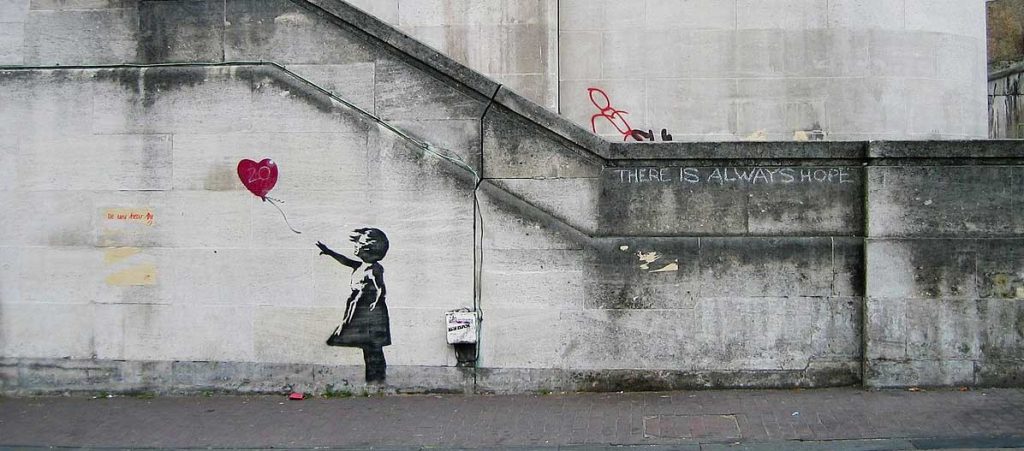
Media Attributions
- Figure 1. Richard Serra: “View Point” Skulptur in Dillingen/Saar Bild selbst erstellt 25.März 2006 Karl Bodinet (Image source: Wikimedia Commons) is licensed under a CC BY-SA (Attribution ShareAlike) license
- Figure 2. Christo and Jeanne-Claude, Running Fence, 1972-1976 (California; Image source: © Elizabeth Barlow Rogers, Foundation for Landscape Studies via Artstor. Used with permission, for education use only).
- Figure 3. Vietnam Veterans Memorial in Washington, D.C., 2022 (Image source: NPS/Wikipedia) is licensed under a CC BY (Attribution) license
- Figure 4. James Turrell, Roden Crater, 20th century (Flagstaff, Arizona; Image source: © Elizabeth Barlow Rogers, Foundation for Landscape Studies via Artstor. Used with permission, for education use only).
- Figure 5. Girl with Balloon or There is Always Hope, version in South Bank (Image Source: Dominic Robinson, Wikimedia Commons) is licensed under a CC BY-SA (Attribution ShareAlike) license
Candela Citations
- The Language of Design: Art, Design, and Visual Thinking. Authored by: Charlotte Jirousek. Provided by: Cornell University. Retrieved from: http://char.txa.cornell.edu/language/introlan.htm. License: All Rights Reserved
- Some Ideas About Composition and Design: Elements, Principles, and Visual Effects. Authored by: Marvin Bartel. Retrieved from: https://www.goshen.edu/art/ed/Compose.htm#principles. License: All Rights Reserved
- Elements of Art. Provided by: J. Paul Getty Museum. Retrieved from: https://www.getty.edu/education/teachers/building_lessons/formal_analysis.html. License: All Rights Reserved
- Question: What is optical blending?. Retrieved from: https://sgvarts.blogspot.com/2012/09/question-what-is-optical-blending.html. License: All Rights Reserved

